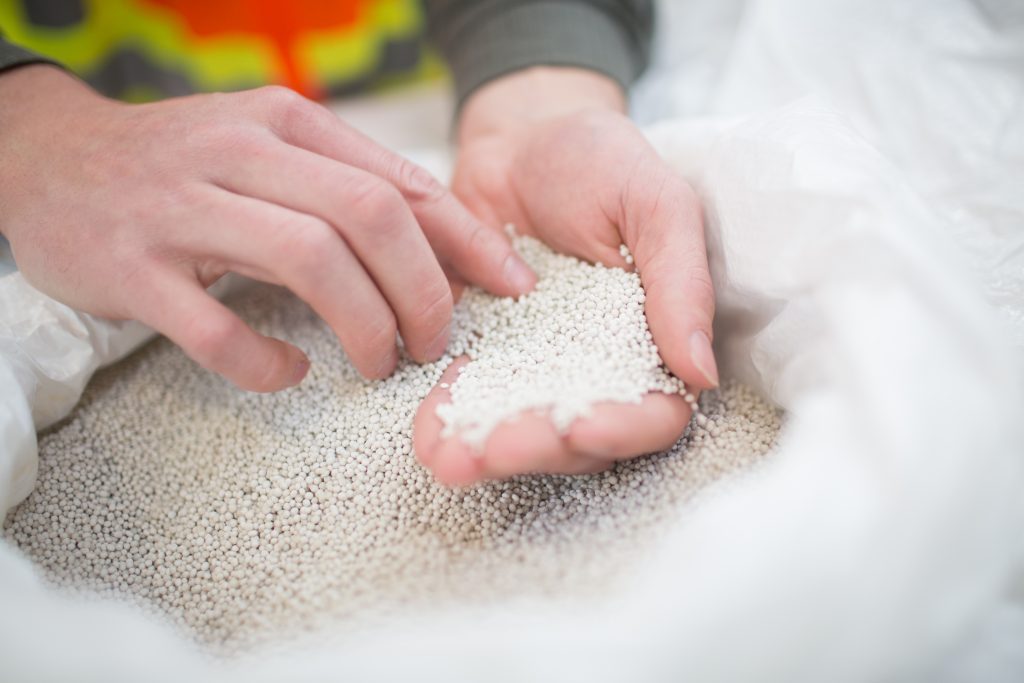Maximizing efforts to recover and reuse beneficial resources
Wastewater contains valuable resources that can be recovered and beneficially reused. The District is committed to resource recovery and works actively to maximize our efforts in this area.
Clean water
Our chief product is clean water. Our Nine Springs Wastewater Treatment Plant cleans about 37 million gallons of wastewater daily, which is enough to fill the bowl of Camp Randall Stadium halfway, each day. Through a robust biological and mechanical treatment process, we return, on average, 16 billion gallons of clean water back to the environment each year.
Our treatment process removes pollutants and pathogens to ensure our clean water, also called effluent, is stream-ready. Our effluent is tested daily at the plant and monthly in the creeks our cleaned wastewater flows into. We also do annual fish and macroinvertebrate surveys to confirm the health of aquatic species in these waterbodies.
Biosolids
The solid, organic material we recover from wastewater is called biosolids. The District generates a Class B liquid biosolids product, called Metrogro, which is recycled to farmland as a valuable fertilizer that supports local agriculture.
By reusing biosolids in agriculture, our District reduces environmental impacts and saves taxpayer dollars over disposal through other less sustainable methods, like landfill or incineration. Metrogro also helps farmers and landowners reduce their reliance on commercial, chemical-based fertilizers.
The District is in the early phases of a long-term study to examine additional uses and potential alternatives for biosolids to better leverage this valuable resource.

Struvite
The District harvests struvite from wastewater and was one of the first wastewater utilities to adopt a struvite harvesting process called Ostara. This resource recovery process harvests nutrients from wastewater, including nitrogen, phosphorus and magnesium, and turns them into a valuable fertilizer product known as struvite.
Struvite can be a nuisance for wastewater treatment plants, as it can form problematic deposits in pipes, tanks and other equipment. But as a form of phosphorus, it’s also a valuable resource.
Phosphorus is a critical element necessary for plant and human life, and globally, the supply of phosphorus can’t keep up with demand. Recovering even a small portion of this nutrient from wastewater for reuse is beneficial.
Biogas
The Nine Springs Wastewater Treatment Plant recovers approximately 295 million cubic feet of biogas per year; in fact, the plant produces enough biogas to supply more than 2,450 homes with methane for a year.
The biogas is produced through anaerobic digestion, the process used to transform biosolids into our Metrogro product. The biogas is cleaned and then used to power plant equipment, such as blowers, generators and boilers.
Reused effluent
We have many processes at the Nine Springs plant that require water, but they don’t all require high-quality drinking water. For these processes, including trough cleaning and cooling water, we reuse plant effluent that is cleaned just enough to prevent growth and buildup in our pipes.
Annually, the District uses approximately 200 million gallons of reused effluent for these purposes. This is water we would have otherwise purchased from the water utility, which would be drinking-water quality and sourced from the aquifers below ground. While this is a small portion of the total water the District uses, reusing effluent frees up enough clean drinking water to supply more than 4,500 average homes with water each year.







